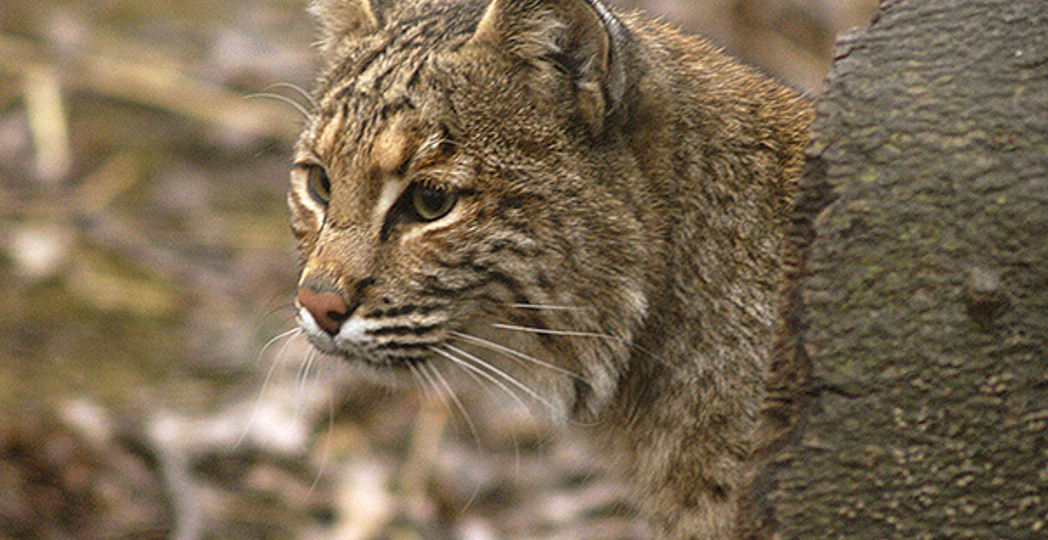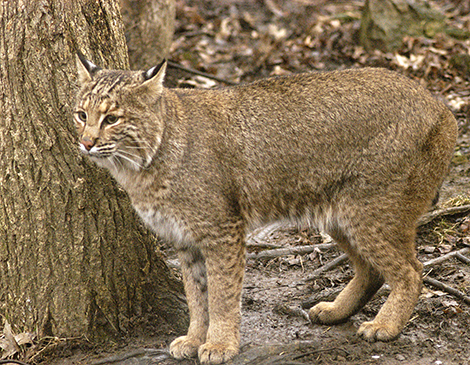Bobcats Are Bouncing Back in Ohio
by Annie Nickoloff | Feb. 5, 2024 | 11:00 AM

Courtesy Ohio Department of Natural Resources
Bobcats have begun to rebound in Ohio — even in Northeast Ohio. The creature’s populations are moving up across the state, as the creature expands from its typical Southeast Ohio range, and even works its way into the Cleveland Metroparks.
The park’s cameras picked up bobcats in 2021 and 2022, marking some of their first sightings in Cuyahoga County and Ohio since the 1800s, says Cleveland Metroparks Wildlife Ecologist Jonathon Cepek. “Seeing bobcats in more and more counties just says that the population is healthy,” he says.
RELATED: Seeking the Snowy Owl on Lake Erie’s Winter Shores
While Cleveland’s park system hasn’t identified any sightings from its 2023 wildlife footage from 200-plus cameras, bobcats have been spotted in other nearby areas more recently — including in Summit Metroparks’ Liberty Park in December.

Big Comeback
Bobcats couldn’t be found in Ohio at all at one point. “Humans changed the landscape as we settled Ohio,” Cepek says. “Those animals, there were zero in the state of Ohio for years.” Now, they are reestablished; Cepek says that statewide sightings and reports show a growing population of bobcats across all of Ohio.
Keep an Eye Out
It’s unlikely you’ll see a bobcat, but if you do, try to get a photo. “The sightings are really important because they’re animals that are hard to track and monitor,” Cepek says. At three feet in length, they’re bigger than a house cat — and weigh between 15 and 35 pounds. They have a black-tipped, bobbed tail, striped legs and spotted bodies.
RELATED: Spotted Lanternflies Are All Over Cleveland: Here’s What to Know About the Invasive Bug
On the Move
Though bobcats were spotted in Cleveland Metroparks intermittently, they weren’t just on the move from one location to another. Instead, it might signify a local population becoming established. “I think because of our multiple observations over a long period, that is probably more than passing through,” Cepek says.
RELATED: 3 Fresh Northeast Ohio Hikes We Love
Shy Friends
See a bobcat out in the wild? Don’t worry too much; the animals aren’t aggressive, and instead are typically pretty shy around humans, usually avoiding urban areas. “Generally, they’re associated more with natural areas, like river corridors, green spaces,” Cepek says. “I think if someone sees one, they’re really lucky.”
RELATED: 9 Unique Underwater Creatures That Call Lake Erie Home
For more updates about Cleveland, sign up for our Cleveland Magazine Daily newsletter, delivered to your inbox six times a week.
Cleveland Magazine is also available in print, publishing 12 times a year with immersive features, helpful guides and beautiful photography and design.

Annie Nickoloff
Annie Nickoloff is the senior editor of Cleveland Magazine. She has written for a variety of publications, including The Plain Dealer, Alternative Press Magazine, Belt Magazine, USA Today and Paste Magazine. She hosts a weekly indie radio show called Sunny Day on WRUW FM 91.1 Cleveland and enjoys frequenting Cleveland's music venues, hiking trails and pinball arcades.
Trending
-
1
-
2
-
3
-
4
-
5










